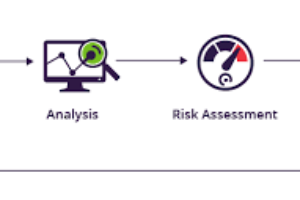Table of Contents
The term “machine learning” is no longer a buzzword in the rapidly evolving world of technology. It has become a force to be reckoned with that’s reshaping industry, driving innovation and changing the way people interact with digital media. The article takes a journey into the complex world of machine learning. It explores its history, its many applications today, and its future.
Understanding Machine Learning
At its core, it is a subset of AI that gives machines the capability to refine their performance with time, without having to explicitly program. Machine learning algorithms are not bound to rigid instructions like traditional algorithms. They can discern patterns and make predictions. And they adapt their behavior based on past experience. The dynamic nature of this process is similar to the human ability to learn from experience and refine decision-making abilities through repeated iterations.
The Emergence
The origins date back to several decades ago. However, its current popularity is due in part to three key factors. These are: exponential growth in data, availability of powerful computing resources and relentless advances in algorithmic techniques. In the 21st Century, the convergence of three key elements pushed machine learning to the forefront of technology innovation. The convergence of these three elements in the 21st century was the catalyst that propelled machine learning into the vanguard of technological innovation.
According to statistics posted by AIMultiple:
- 65% of companies who are planning to adopt machine learning say the technology helps businesses in decision-making. (MemSQL)
- 74 % of respondents consider ML and AI to be a game changer, indicating it had the potential to transform their job and industry.
- Top drivers of ML adoption are (Refinitiv)
- Extracting better quality information (60%)
- Increasing productivity and speed in processes (48%)
- Reducing costs (46%)
- Extracting more value from data (31%)
Modern Applications
The concept has become a part of everyday life. It is no longer confined to abstract concepts. It enhances experiences, simplifies processes and increases human abilities. Machine learning is used in a wide range of fields.
- Natural Language Processing: NLP algorithm empowers machines to understand, interpret and even create human language. The technology that powers virtual assistants such as Siri, and chatbots to streamline customer service is based on this foundational technology.
- Video and Image Recognition: Machine learning’s prowess is evident in video and image recognition systems. These applications, which range from facial recognition to the ability of autonomous vehicles to decipher complex road scenes with great precision, demonstrate machine learning’s remarkable capacity to process data visually.
- System of Recommendations: Machine learning is the driving force behind Netflix, and other e-commerce platforms like Amazon. It fuels recommendation system that provide personalized suggestions to users. The level of personalization increases user engagement, which in turn boosts sales.
- Biomedicine and Healthcare: Machine learning in healthcare has transformative power. By analyzing massive amounts of data, it can be used to diagnose diseases, accelerate drug discovery, or even predict outbreaks.

Future Applications
Machine learning is a promising technology that has the power to transform our world.
- Deep-Learning Dominance: Deep-learning, an important subset of Machine Learning inspired by complex neural networks in the brain, has a strong chance of dominating. The paradigm shift will revolutionize tasks such as autonomous driving, robots and medical diagnosis.
- Confluence of Interdisciplinary Domains: Machine learning tendrils will spread beyond technology and permeate diverse domains, fostering cross-disciplinary cooperations. The confluence of machine learning with fields such as biology, economics and social sciences will lead to symbiotic relations, resulting in new insights and possibilities.
- Ethics: With the growing reliance on Machine Learning, ethical issues are becoming more prominent. Machine learning is challenged by the proliferation of bias, the question of fairness and privacy intrusions. To ensure an AI landscape that is fair and responsible, it’s important to address these ethical dilemmas.
- Continuous Learning: Machine-learning models will be able to adapt to changing scenarios and learn efficiently using limited data sets. They are extremely useful in environments that change frequently.
- AI explainability: Machine learning models are opaque by nature, and this has led to a push for AI systems which can be understood. Explainable AI systems are crucial for building trust, improving human-machine interaction, and understanding complex decision-making. In recent times, AI has improved tremendously, prompting a new field called “generative AI’” which has it’s own subset of uses.
ML has become the driving force behind innovation and change. It has a long history, and its current ubiquity in diverse industries is a testament to how it can reshape challenges to unlock new opportunities. This trajectory is marked by a promise that won’t waver, as well as breakthroughs in interdisciplinary research and ethical concerns. These will shape our digital world to a degree we have never imagined. To fully embrace the potential, you need to be able not only to use the technology but also have a deep understanding of the ethical implications and the societal impact it has. It’s an exciting journey, with a destination that is brimming with endless possibilities poised to redefine our world.





